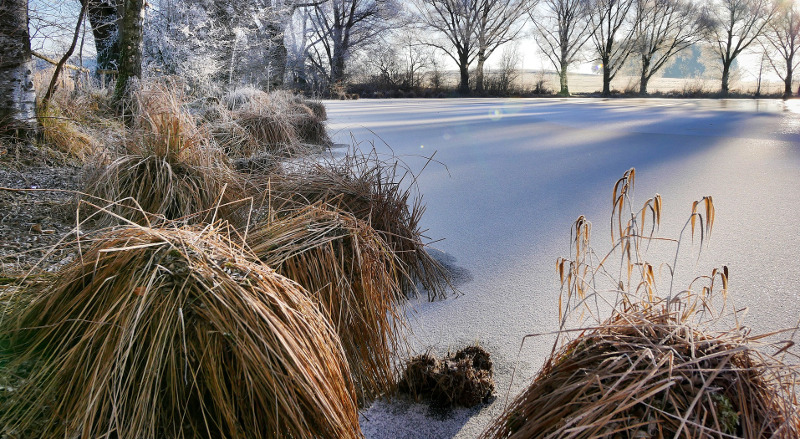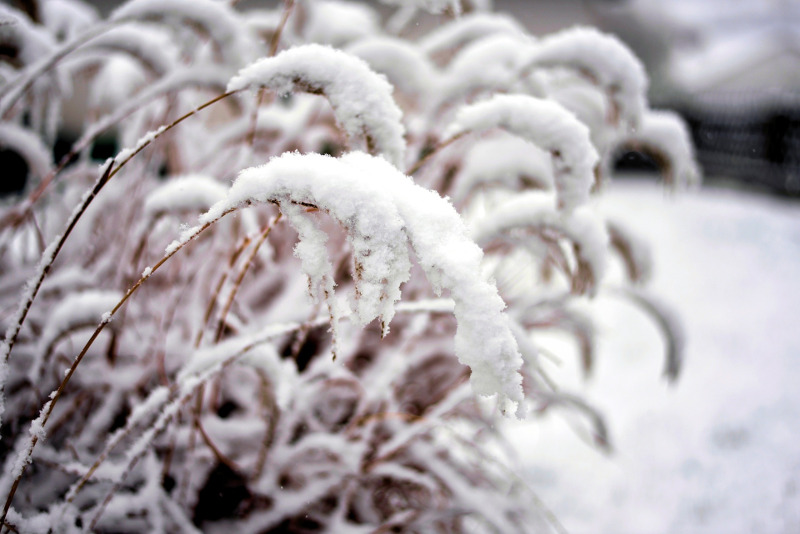Ornamental grasses grace nearly any type of landscape and often provide winter interest in the garden. Some grasses are evergreen, and retain some color even after trees and shrubs in the landscape drop their leaves. Most warm-season and cool-season grasses often look pretty in winter landscapes, even when dormant. The reason is that many ornamental grasses "bloom" with wispy seed stalks that birds love and that sway in winter breezes. Most perennial grasses survive the winter with little to no care, as long as you have chosen an ornamental grass hardy to your growing zone.

Deciding how to care for an ornamental grass in winter depends partly on whether it is a warm-season or cool-season grass. Cool-season grasses usually grow best when temperatures are between 60 and 75 degrees F; warm-season ornamental grasses thrive in hotter temperatures (between about 80 and 95 degrees). In general, cool-season grasses grow better in colder, northern growing zones of the United States, and warm-season grasses favor southern regions and southwestern regions.
Cutting Back Ornamental Grasses for Winter
There is no reason to prune cool-season ornamental grasses before winter strikes. In fact, you probably will prefer to leave all ornamental grasses alone in fall. Most look good swaying in winter breezes, and some varieties have colorful fall foliage. A few ornamental grass varieties, such as mondo grass, dwarf pampas grass and some sedges, are evergreen. It might be necessary to divide these grasses as they spread and die out in the center. Fall is the best time to divide these grasses, but spring also works in regions with mild winters.
Warm-season ornamental grasses go dormant in winter and the blades and seed heads dry out and usually turn brown. Still, birds can enjoy the seeds and some of the dried foliage is attractive. Wait to cut these grasses down to about 4 to 6 inches above the ground in spring.

Ornamental Grass Winter Care in Pots
Ornamental grasses add height and drama to container arrangements, so even small annual ornamental grasses for your zone can grow nicely as a backdrop or center for flowering annuals in a pot. Caring for ornamental grasses grown in containers is much like caring for those grown in the ground, with a few exceptions. First, if you buy a perennial ornamental grass based on your growing zone, remember that a pot is much colder than the ground. Either choose perennial grasses hardy to a few zones colder than yours or bring the container inside to a garage or other sheltered area in winter.
Watering Ornamental Grass in Winter
Most established ornamental grasses need little additional watering except in periods of drought. Most grasses go dormant in winter; those planted in the ground will survive with typical snow or rain. You can water grasses in containers only occasionally, since containers dry out so much. In winter, they likely need no more than monthly watering because the grasses need to remain dormant.

Growing Ornamental Grass Indoors
If you want to winter over a tender ornamental grass indoors, be sure to match the light level the grass received outdoors. Those that grow best in shade or part shade will fare better in indoor container arrangements.
Ornamental Grass Winter Care Tips
- Ornamental grasses can add to your winter landscape appeal, whether evergreen or dormant. The grasses need little care.
- In most cases, don't bother cutting back ornamental grass in fall; leave the dried blades on until late winter/early spring.
- Many ornamental grasses go dormant in winter, so if you have chosen a grass that can tolerate your average low temperature, it should come back in spring.
- Move tender grasses in containers indoors if temperatures will dip below their threshold.
- Don't try to force most perennial ornamental grasses to green up with frequent watering. They need to rest in winter.
 |
Author Teresa Odle - Published 11-14-2020 |
